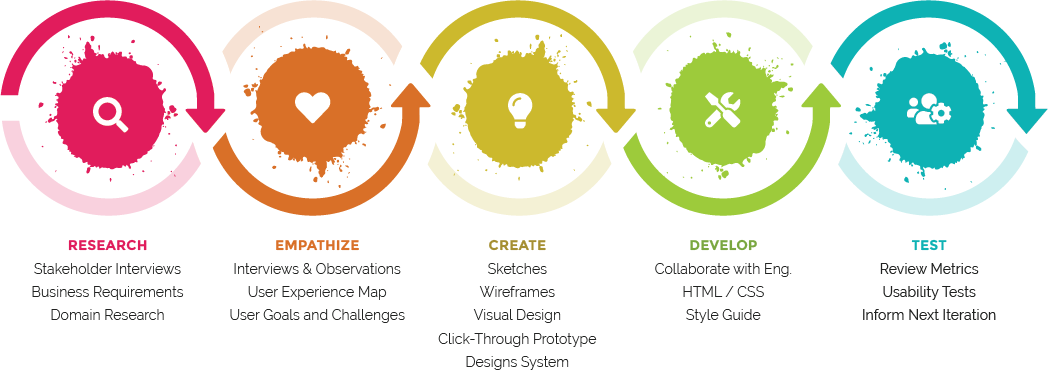MY PROCESS
I start every project by talking with stakeholders, gathering data, and learning about the business. My goal is to thoroughly understand the client's needs. Getting to the heart of what motivated them to reach out will inform my design approach. These are some questions I ask:
- What are the problems and goals that the product addresses?
- How do users currently achieve those goals?
- What are the pain points for the business (if any)?
- Which business metrics are you trying to improve?
- Why are you talking to me in particular?
My first step for redesigns is a thorough audit of the existing product to find areas for improvement.
If possible, I like to watch people using the product. There is so much we can learn by observing a person as they navigate through a flow. I pay attention to little clues, such as a hesitation before hitting a button, or scrolling up and down a screen.
When it comes to the creative part, I like to brainstorm with the team before honing in on a solution. Often, the best ideas are generated by sketching out various concepts quickly.
Depending on the scope and complexity of a project, I use wireframes to work out the flow. This saves time, and changes can easily be done on-the-fly. I am a big believer in sharing designs early and often.
For high-fidelity mockups, Figma is my tool of choice. It's great for visual designs, click-through prototypes, and design systems. A visual designer at heart, I tend to obsess over spacing, font styles, and finding just the right shade of grey. My design values are simplicity and clarity. Avoiding "no results" or error pages is key, and I deeply care about language.
Once a design has been implemented, I love to collaborate with the engineering team. Sometimes, adjusting a hex color or spacing is best done in the code. I am always happy to tweak the CSS myself.
Of course, good product design is never finished. After launching, it's exciting to see people interacting with the product and learning from the data. In addition to gathering qualitative feedback, I love to get deeper insights by looking at metrics. Combined, this will let us know whether the design was successful.
“If we want users to like our software we should design it to behave like a likable person: respectful, generous, and helpful.” — Alan Cooper

